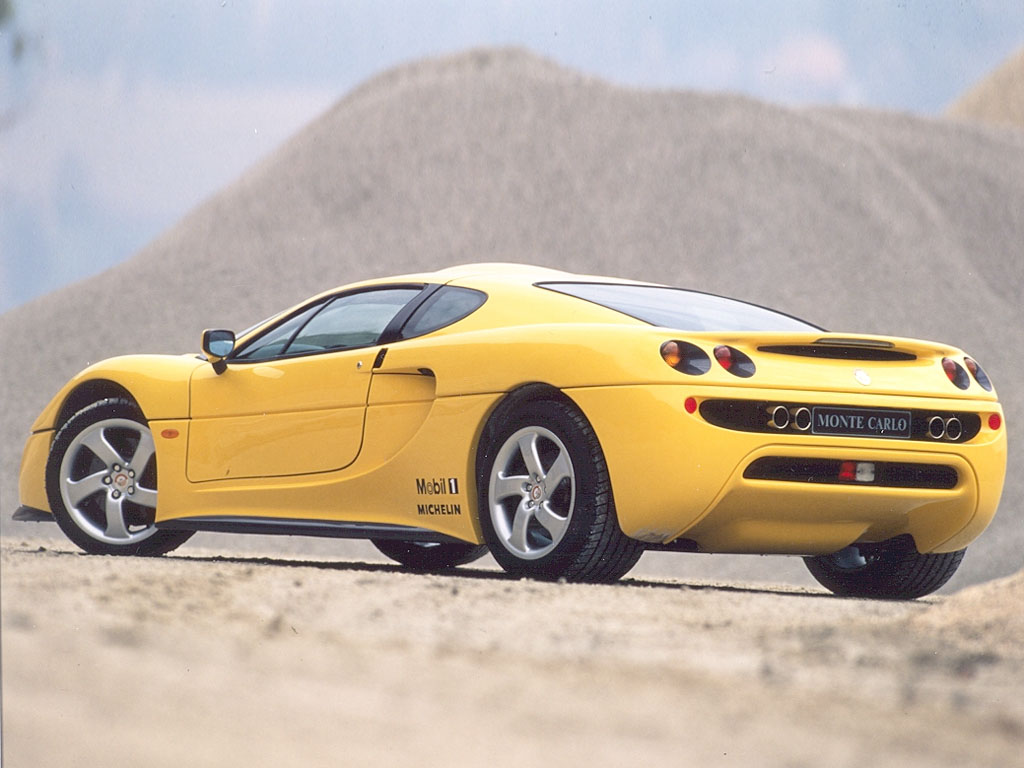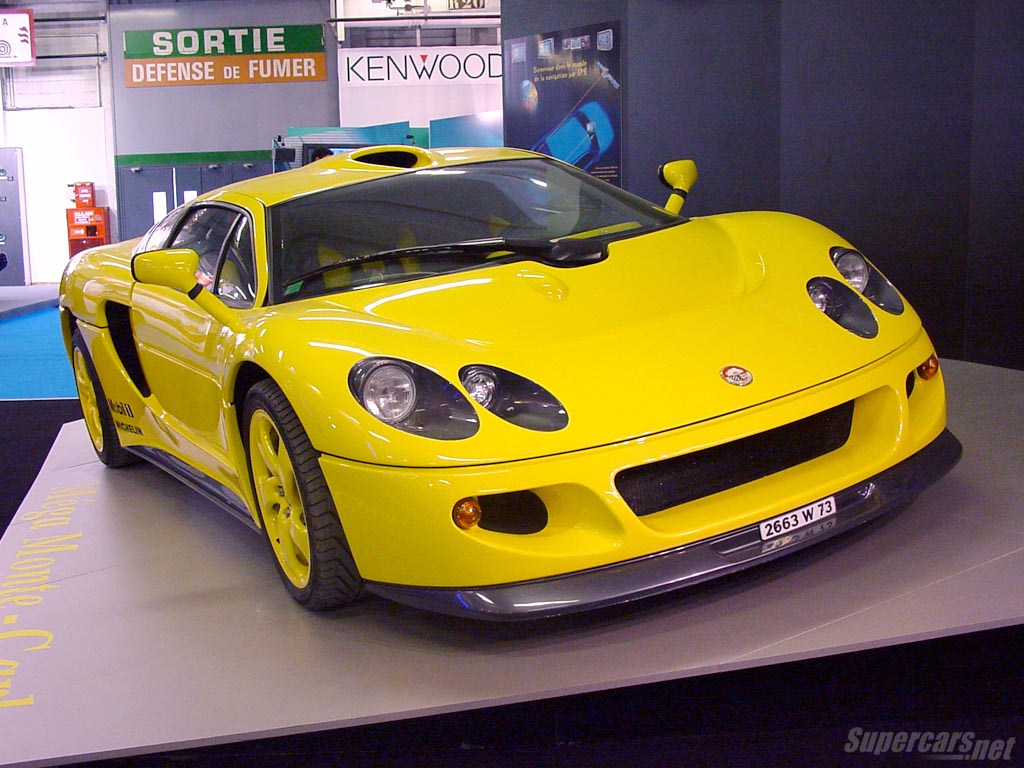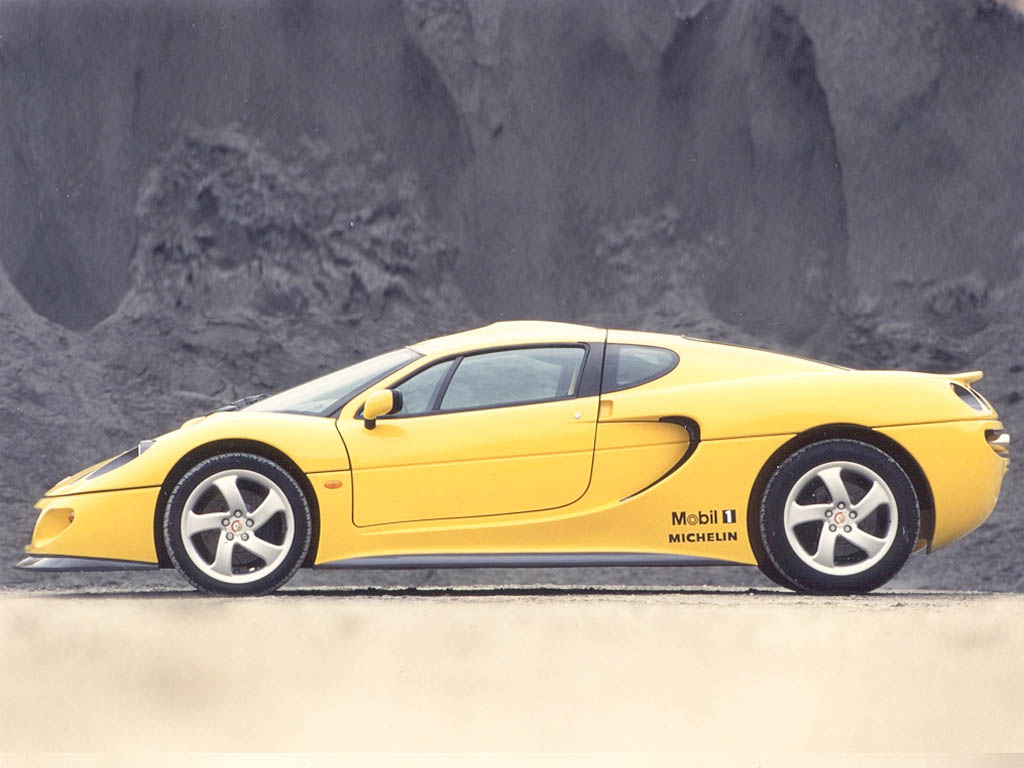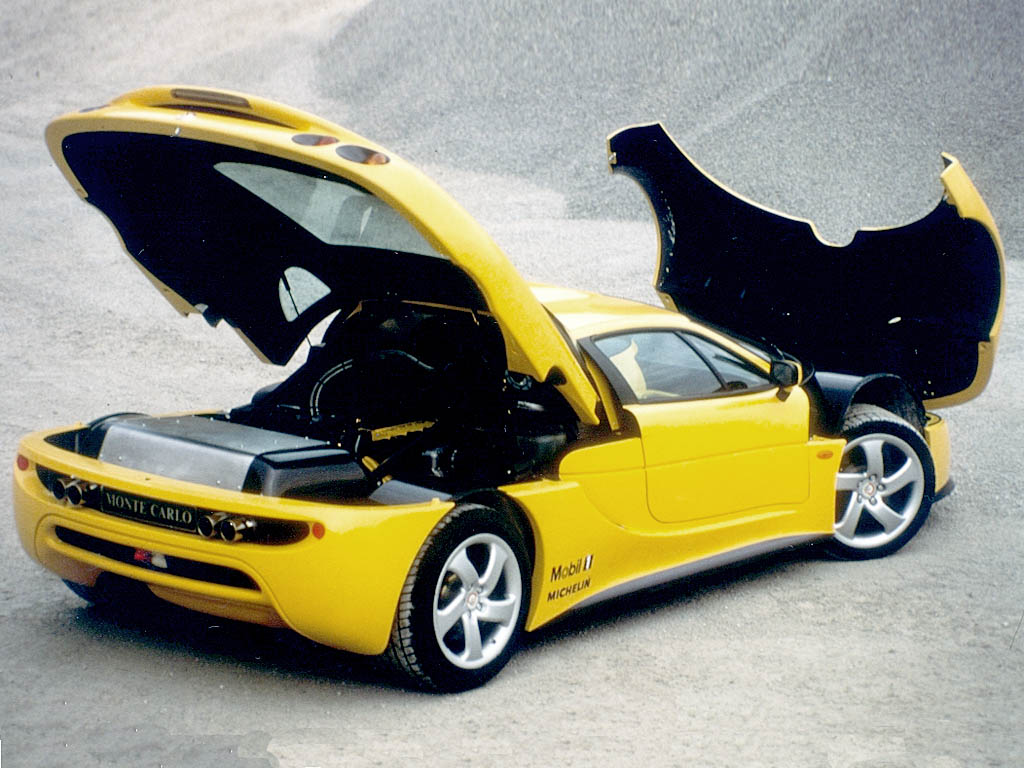1998 Mega Monte Carlo
Started in 1983, the French Aixam Group started producing two and four wheel vehicles that could be driven without a license. This production evolved into the micro-car market and, in 1992, a motor sport program was started under the new Mega name.
The first production road car from Mega was the Track. It used the Mercedes V12, delivering 394 horsepower to all four wheels. A unique feature of the Track was it’s adjustable ride height. At full height, the car raised it’s clearance from eight to thirteen inches!
Only five examples of the Track were completed, before a new more exciting product would take its place.
The Monte Carlo
Mega decided to join the small group of manufacturers producing exclusive supercars in 1996. Their acquisition of Monte-Carlo Automobile Ltd included plans to build an exclusive super sports car for both the road and the 24 Hours of Le Mans.
Mega turned to Sera CD, a vehicle engineering Research and Development Company, for design of the Monte Carlo. SERA CD used computer aided design to manufacture the first prototype which included special attention paid to the flat underbody and rear diffuser. Much like the Porsche 917s and F1 cars built by Sera CD, the Monte Carlo was both striking and purpose built.
The first Monte Carlo was displayed at the 1996 Geneva Motor Show. It showcased proven engineering which included a carbon fiber chassis, carbon fibre brakes and a mid-mounted, Mercedes V12 engine. By 1998 a production version was ready with optional carbon brakes and rear wing.
Conclusion
Production of cars such as the Mega Monte Carlo is a rare occurrence. Seldom does a small manufacturer have the resources to develop, market and produce such a complex product, especially against huge conglomerates and global brands. Companies such as Mega, Pagani and Koenigsegg should be recognized not only for their radical design, but for their determination to create exceptional automobiles for such small markets.
Story by Richard Owen for Supercars.net
In Detail
| submitted by | Richard Owen |
| engine | Mercedes S600 V12 |
| position | Mid-Longitudinal |
| aspiration | Natural |
| valvetrain | DOHC 4 Valves / Cyl |
| displacement | 5991 cc / 365.6 in³ |
| bore | 89.0 mm / 3.5 in |
| stroke | 80.3 mm / 3.16 in |
| compression | 10.0:1 |
| power | 294.6 kw / 395 bhp @ 5200 rpm |
| specific output | 65.93 bhp per litre |
| bhp/weight | 263.33 bhp per tonne |
| torque | 570 nm / 420.4 ft lbs @ 3800 rpm |
| body / frame | Carbon Fibre Body over Carbon Fibre Tub |
| driven wheels | Mid Engine / RWD |
| front tires | F 275/35ZR-18 Michlin Pilot Sport |
| rear tires | R 345/35ZR-18 Michlin Pilot Sport |
| front brakes | Brembro Vented Discs w/4-Piston Calipers |
| f brake size | x 355 mm / x 14.0 in |
| rear brakes | Brembro Vented Discs w/4-Piston Calipers |
| r brake size | x 330 mm / x 13.0 in |
| front wheels | F 45.7 x 25.4 cm / 18.0 x 10.0 in |
| rear wheels | R 45.7 x 33.0 cm / 18.0 x 13.0 in |
| steering | Rack & Pinion w/Variable Power Asisst |
| f suspension | Doublr Wishbones |
| r suspension | Doublr Wishbones |
| curb weight | 1500 kg / 3307 lbs |
| wheelbase | 2660 mm / 104.7 in |
| front track | 1670 mm / 65.7 in |
| rear track | 1640 mm / 64.6 in |
| length | 4450 mm / 175.2 in |
| width | 1990 mm / 78.3 in |
| height | 1190 mm / 46.9 in |
| transmission | ZF 6-Speed Manual |
| gear ratios | 2.83:1, 1.72:1, 1.18:1, 0.92:1, 0.77:1, 0.64:1, :1 |
| final drive | 3.78:1 |
| top speed | ~300.0 kph / 186.4 mph |
| 0 – 60 mph | ~4.4 seconds |











